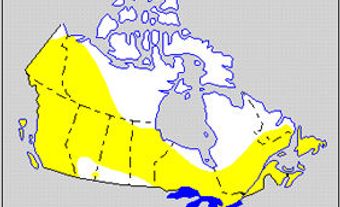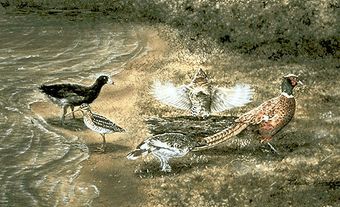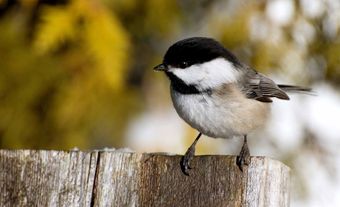The nuthatch (Sittidae) family consists of small, tree-climbing birds with a short tail, pointed bill and long, sturdy toes and claws. Nuthatches eat invertebrates and seeds and often store seeds in crevices in bark. Hard-shelled seeds are hammered open in such crevices, hence the name "nuthatch." They often associate in mixed-species feeding flocks with chickadees. Nuthatch vocalizations consist of nasal sound calls.
Range and Habitat
Although most nuthatches are found in Asia, 4 species occur in North America, 3 of them in Canada. The red-breasted nuthatch (Sitta canadensis) is widespread, found in woodlands throughout Canada. The white-breasted nuthatch (S. carolinensis) has a patchy distribution and is found only in some southern parts of Canada. The pygmy nuthatch (S. pygmaea) is rare in Canada and is found only in the southern interior of BC.
Nesting
Nuthatches excavate nest cavities in trees, usually in soft or rotten wood. They may modify natural cavities with mud masonry or resin to reduce the size of the entrance hole. They lay 4 to 10 eggs. The young have a long nestling period (22 to 24 days). Nuthatches do not migrate but in some years undergo major southward movements. These eruptive movements are understood to be associated with high food abundance in the previous breeding season followed by a food shortage in the autumn.

 Share on Facebook
Share on Facebook Share on X
Share on X Share by Email
Share by Email Share on Google Classroom
Share on Google Classroom







